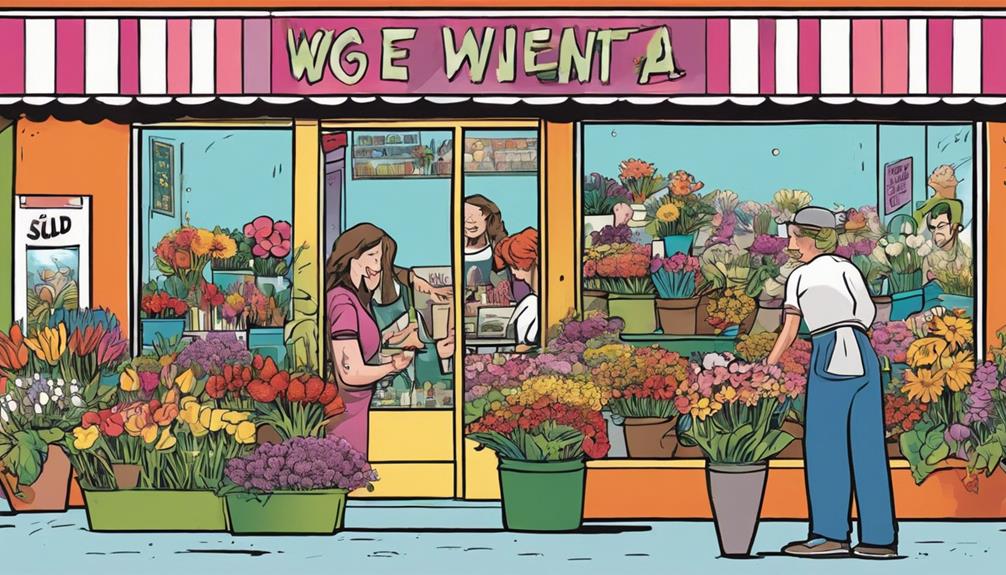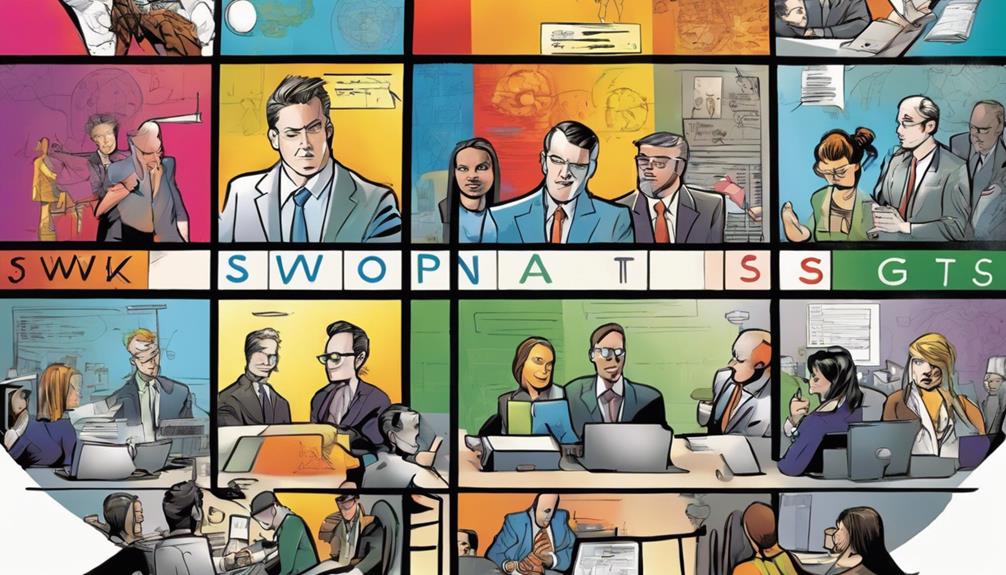If you've ever been disappointed by a Valentine's bouquet, you're not alone. That frustration led to the birth of Venus Et Fleur, a floral brand that changed the game. Seema and Sunny Chadha saw a gap in the market for high-quality, long-lasting flowers. Their innovative Eternity Flowers are designed to last a whole year, redefining floral gifting. By leveraging strategic celebrity endorsements and an effective marketing strategy, they turned their humble beginnings into impressive growth. Want to know how they overcame challenges and achieved such remarkable success? Stick around to uncover the details behind their journey.
Key Takeaways
- Frustration over a disappointing Valentine's Day bouquet inspired Seema and Sunny Chadha to create Venus et Fleur.
- The brand filled a market gap for high-quality, long-lasting floral arrangements with its innovative Eternity Flowers.
- Strategic celebrity endorsements significantly boosted brand visibility and sales, leading to stock shortages.
- Impressive retail revenue growth of 450% since 2019 highlights strong market demand for their unique offerings.
Entrepreneurial Origins of Venus Et Fleur
The entrepreneurial journey of Venus et Fleur began with Seema and Sunny Chadha's frustration over a disappointing Valentine's Day bouquet, sparking their vision for a floral brand that embodies elegance and quality.
Their backgrounds in entrepreneurship fueled their determination to create a new standard in floral design. They identified a gap in the market for consistent, high-quality floral arrangements, inspired by the sophistication of Parisian aesthetics and decorative hat boxes.
Naming their brand 'Venus et Fleur' reflected their commitment to elegance and quality.
This personal experience not only ignited their passion but also laid the foundation for a thriving business that resonates with customers seeking a memorable floral experience.
Their journey showcases how frustration can lead to innovative entrepreneurial ventures.
Innovative Flower Offerings

Building on their vision for elegance and quality, Venus et Fleur sets itself apart with its innovative Eternity Flowers, designed to last an entire year through a specialized preservation process.
You'll appreciate how these flowers maintain their vibrancy and beauty, thanks to a partnership with an Ecuadorian farm that uses non-toxic solutions and natural oils. This careful sourcing guarantees that you receive the highest quality blooms without the typical short lifespan.
Unlike traditional arrangements, these flowers offer a lasting solution for special occasions or home decor.
With their stunning presentation in decorative hat boxes, you'll find that Venus et Fleur has redefined floral gifting, allowing you to enjoy exquisite blooms without the worry of wilting.
Effective Marketing Strategies

Venus et Fleur's marketing strategy leverages celebrity endorsements to create buzz and drive demand, ensuring their stunning arrangements reach a broad audience.
You'll notice how the brand initially sent flowers to influencers, leading to an immediate surge in visibility and sales. When celebrities like Kourtney and Khloe Kardashian showcased arrangements on Instagram, stock shortages followed, highlighting the impact of their reach. Continued endorsements from icons like Drake and Oprah further solidified the brand's reputation.
Additionally, the company capitalizes on social media marketing, engaging customers with visually appealing content and interactive campaigns. This approach not only builds community but also fosters loyalty, making it clear that strategic marketing plays a significant role in Venus et Fleur's impressive growth trajectory.
Managing Supply Chain Challenges

Managing supply chain challenges requires meticulous planning and temperature-controlled logistics to guarantee the longevity of floral products.
You must carefully coordinate with suppliers, ensuring that your flowers are sourced from reliable farms that prioritize quality.
By implementing a made-to-order model, you can maintain freshness, but it demands advanced forecasting—often planning eight months ahead.
Leveraging data analysis helps you anticipate demand and avoid stock shortages.
Additionally, hiring dedicated personnel for supply chain oversight can streamline operations.
As you navigate these complexities, remember that clear communication with all stakeholders is essential.
Your ability to adapt quickly to unforeseen challenges will ultimately set you apart in a competitive market, ensuring your floral offerings remain both high-quality and available.
Impressive Business Growth

Since 2019, the brand has seen an extraordinary retail revenue increase of 450%, showcasing its remarkable growth in the floral industry. This impressive expansion isn't just about numbers; it reflects a strong market demand for innovative floral solutions.
Here are three key factors contributing to this success:
- Unique Product Offering: The Eternity Flowers stand out, lasting a year compared to traditional arrangements.
- Strategic Partnerships: Collaborating with an Ecuadorian farm guarantees high-quality sourcing and preservation.
- Bootstrapped Growth: Without outside funding, the brand focused on collaboration and continuous improvement, fueling sustainable growth.
As you look to the future, these strategies can inspire your entrepreneurial journey and highlight the importance of adaptability in business.
Celebrity Influence on Sales

The remarkable revenue growth of Venus et Fleur can be largely attributed to the powerful impact of celebrity endorsements on brand visibility and consumer demand.
By sending their stunning arrangements to influencers, the brand quickly captured attention. When Kourtney and Khloe Kardashian showcased their flowers on Instagram, it caused an immediate surge in sales, leading to stock shortages.
This momentum continued as other celebrities like Drake and Oprah supported the brand, further amplifying its reach.
You can see how personal branding plays a vital role; when high-profile figures endorse a product, it not only boosts visibility but also elevates consumer trust.
The connection between celebrity influence and sales is undeniable, proving that a well-placed endorsement can transform a brand's trajectory.
Lessons for Aspiring Entrepreneurs

Aspiring entrepreneurs can learn valuable lessons from Venus et Fleur's journey, particularly the importance of identifying a gap in the market and leveraging personal experiences to drive innovation. Here are three key takeaways to reflect upon:
- Find Your Niche: Look for unmet needs in the market and tailor your offerings to fill that gap. Venus et Fleur capitalized on the demand for long-lasting floral arrangements.
- Leverage Personal Stories: Use your experiences to inspire your business model. The founders turned a disappointing bouquet into a thriving brand.
- Emphasize Quality: Prioritize quality in your products. Venus et Fleur's commitment to sourcing high-quality flowers set them apart from competitors.
Conclusion
In the serendipitous twist of a disappointing Valentine's Day, you find inspiration that can spark your own entrepreneurial journey.
Just as Seema and Sunny transformed a setback into success with Venus et Fleur, you too can turn unexpected moments into opportunities.
Embrace the coincidences life throws your way; they might just lead you to your next big idea.
Remember, every flop can be a stepping stone toward your own floral fame—it's all about how you choose to see it.









